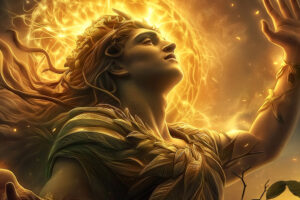Have you ever gazed up at the night sky and wondered about the patterns formed by the stars? These celestial arrangements are known as constellations. While they might seem random, they have fascinated humans for millennia, inspiring myths, stories, and navigation. But what exactly are the different types of constellations? Let’s dive in.
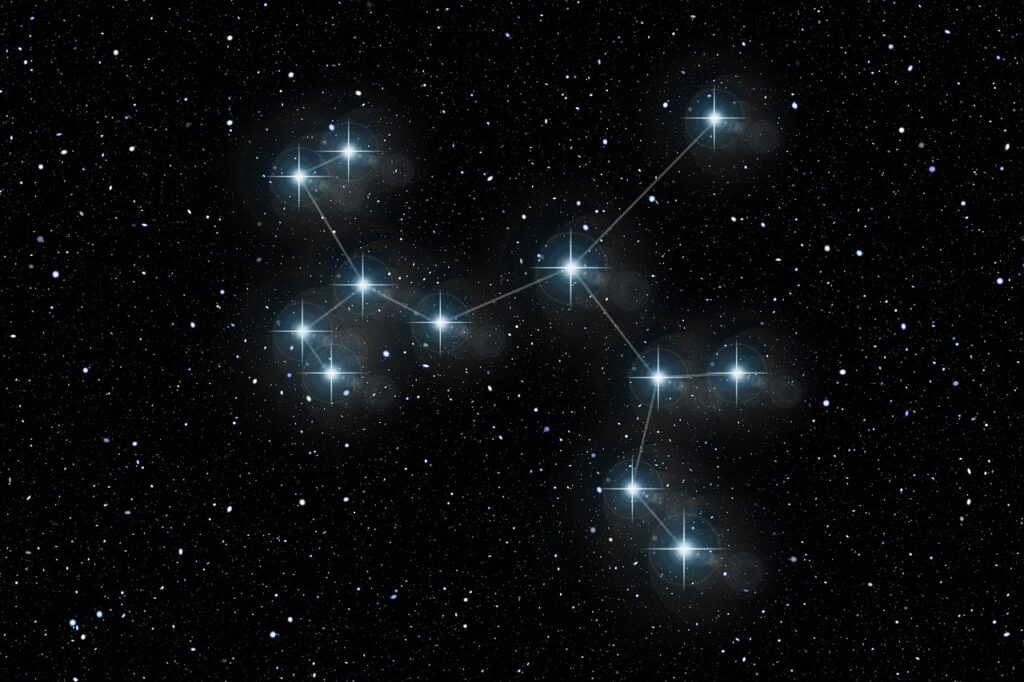 Pin
Pin Image by Gerd Altmann from Pixabay
Table of Contents
Understanding Constellations
Before we delve into the types, it’s essential to understand what a constellation is. A constellation is a group of stars that form a recognizable pattern when viewed from Earth. These patterns have been given names and often associated with mythological figures, animals, or objects.
- Types of Constellations: While there’s no strict scientific classification for constellation types, we can categorize them based on various criteria.
Zodiac Constellations: The Celestial Band
The Ecliptic Path: The Zodiac constellations are a unique group of stars that occupy a specific band across the sky. This band is known as the ecliptic. Imagine the ecliptic as a great circle around the Earth, representing the Sun’s apparent path as it moves through the sky over a year.
The Twelve Signs: Historically, this celestial belt was divided into twelve equal sections, each assigned to a constellation. These twelve constellations form the basis of astrology, though it’s important to differentiate between astrology and astronomy.
 Pin
Pin Image by StarRegistration.net
The twelve zodiac constellations are:
- Aries (The Ram): Symbolized by a ram, Aries is the first sign of the zodiac.
- Taurus (The Bull): Represented by a bull, Taurus follows Aries.
- Gemini (The Twins): Depicted as twins, Gemini is the third sign.
- Cancer (The Crab): Symbolized by a crab, Cancer is the fourth sign.
- Leo (The Lion): Represented by a lion, Leo is the fifth sign.
- Virgo (The Virgin): Depicted as a virgin, Virgo is the sixth sign.
- Libra (The Scales): Symbolized by scales, Libra is the seventh sign.
- Scorpio (The Scorpion): Represented by a scorpion, Scorpio is the eighth sign.
- Sagittarius (The Archer): Depicted as a centaur with a bow and arrow, Sagittarius is the ninth sign.
- Capricorn (The Sea-Goat): A mythical creature, half-goat, half-fish, Capricorn is the tenth sign.
- Aquarius (The Water-Bearer): Symbolized by a person carrying water, Aquarius is the eleventh sign.
- Pisces (The Fishes): Depicted as two fish, Pisces is the twelfth and final sign.
Importance of Zodiac Constellations:
The zodiac constellations have held cultural and astronomical significance for millennia.
- Timekeeping: Ancient civilizations used them to track the seasons and develop calendars.
- Navigation: Sailors relied on these constellations for guidance during their voyages.
- Astrology: While not a scientific discipline, astrology has used the zodiac signs to interpret human personality and predict events.
- Astronomy: While modern astronomy focuses on the scientific study of celestial bodies, the zodiac constellations still serve as a familiar reference point for stargazers.
It’s crucial to remember that while the zodiac signs are based on these constellations, the actual positions of the stars have shifted over time due to a phenomenon called precession. This means that the Sun’s position relative to the constellations is no longer aligned with the traditional zodiac dates.
Circumpolar Constellations: The Eternal Guardians of the Sky
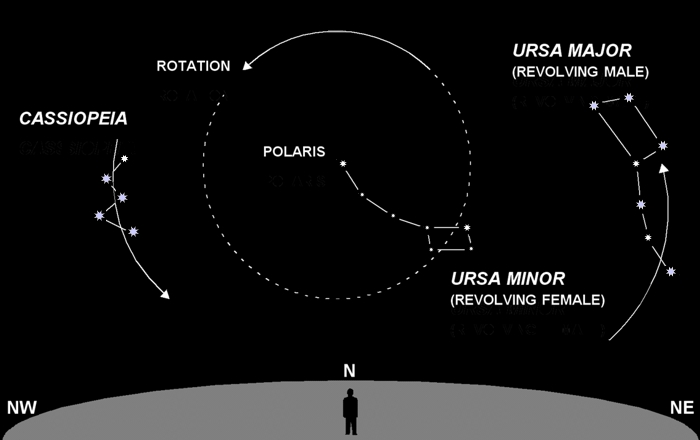 Pin
Pin Image by sky-lights.org
What are Circumpolar Constellations?
Unlike constellations that rise and set, circumpolar constellations are those that never dip below the horizon as seen from a specific latitude. They appear to rotate endlessly around a fixed point in the sky. This is due to the Earth’s rotation on its axis.
The Celestial Pole and Circumpolar Motion
The key to understanding circumpolar constellations is the celestial pole. This is the projection of Earth’s North or South Pole onto the celestial sphere. For observers in the Northern Hemisphere, the North Star (Polaris) is very close to the North Celestial Pole.
Circumpolar constellations are located near the celestial poles. As the Earth rotates, they appear to circle around this point, hence the term “circumpolar.” The closer you are to the Earth’s pole, the more constellations will be circumpolar. For instance, at the North Pole, all stars in the Northern Celestial Hemisphere are circumpolar.
The Case of Ursa Minor
Ursa Minor, commonly known as the Little Dipper, is a prime example of a circumpolar constellation. It contains Polaris, the North Star, which is remarkably close to the North Celestial Pole. This makes it an invaluable tool for navigation as it indicates the north direction.
Other Notable Circumpolar Constellations
While Ursa Minor is the most famous, there are other significant circumpolar constellations:
- Ursa Major: The Big Dipper is part of Ursa Major. While not all of Ursa Major is circumpolar for every location, it’s a prominent constellation in the northern sky.
- Cassiopeia: Easily recognizable by its “W” shape, Cassiopeia is another circumpolar constellation.
- Cepheus: This constellation is often overlooked but is located near Cassiopeia.
- Draco: The Dragon, Draco, winds its way around the Little Dipper.
Importance of Circumpolar Constellations
Beyond their aesthetic beauty, circumpolar constellations have practical applications:
- Navigation: As mentioned, Polaris has been used for centuries as a navigational aid.
- Timekeeping: Ancient cultures used the positions of circumpolar stars to track time.
- Cultural Significance: Many cultures have myths and stories associated with these constellations.
By observing and understanding the patterns of circumpolar constellations, one can gain a deeper appreciation for the Earth’s rotation and our place in the cosmos.
Seasonal Constellations: The Celestial Calendar
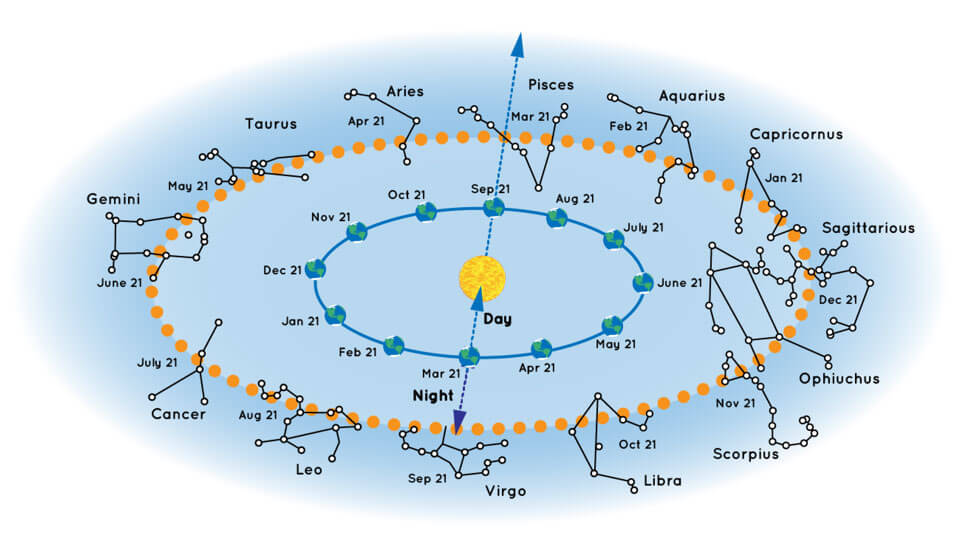 Pin
Pin Image by spaceplace.nasa.gov
The Earth’s Orbit and Celestial Shifts
As our planet orbits the Sun, our perspective on the night sky changes. This is why certain constellations are prominent during specific times of the year. Imagine standing on a moving train and looking out the window. The scenery changes as you move. Similarly, as Earth travels around the Sun, we see different parts of the celestial sphere.
The Celestial Sphere and Seasons
To understand this better, visualize the celestial sphere, an imaginary sphere surrounding Earth with all celestial objects projected onto it. As Earth orbits the Sun, different portions of this sphere become visible during different seasons.
- Summer: During the summer months in the Northern Hemisphere, Earth is positioned in a way that reveals constellations like Scorpius, Sagittarius, and Hercules. These are often referred to as “summer constellations.”
- Autumn (Fall): As the nights grow longer, constellations like Pegasus, Andromeda, and Cetus become more prominent.
- Winter: Orion, Taurus, and Gemini are among the most recognizable winter constellations.
- Spring: Leo, Virgo, and Boötes are prominent in the spring sky.
It’s important to note that these are general guidelines. The exact visibility of constellations can vary depending on your geographic location and latitude.
Factors Affecting Constellation Visibility
Several factors influence which constellations are visible at a particular time:
- Earth’s Tilt: The tilt of Earth’s axis means that different parts of the planet are exposed to different portions of the sky throughout the year.
- Latitude: Your location on Earth determines which constellations are circumpolar (always visible) and which rise and set.
- Light Pollution: Artificial light can obscure fainter stars, making it difficult to observe certain constellations.
The Cultural Significance of Seasonal Constellations
For millennia, humans have looked to the stars for guidance, inspiration, and storytelling. Seasonal constellations were often linked to agricultural cycles, religious beliefs, and mythology. For instance, the appearance of certain constellations might have signaled the beginning of planting or harvesting seasons.
By observing the changing night sky, our ancestors developed a deep connection to the natural world and the passage of time.
Mythological Constellations: Starry Tales
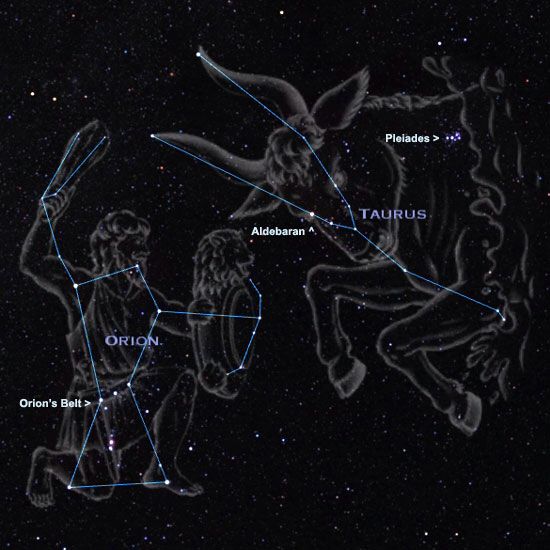 Pin
Pin Image by classicsmalta.org
The night sky, a vast expanse of twinkling lights, has captivated human imagination since time immemorial. Ancient civilizations found patterns in these celestial bodies, giving birth to constellations. Many of these constellations are deeply rooted in Greek, Roman, and other mythologies, transforming the heavens into a celestial storybook.
A Celestial Pantheon
These constellations are more than just random patterns of stars; they represent gods, heroes, creatures, and even objects from these ancient tales. Each constellation carries a unique story, a piece of the rich cultural heritage of these civilizations.
- Hercules: A testament to strength and courage, this constellation symbolizes the legendary hero known for his twelve impossible labors. His placement among the stars is a celestial recognition of his extraordinary feats.
- Pegasus: This winged horse, born from the blood of Medusa, is a symbol of inspiration and creativity. Its tale, intertwined with the hero Perseus, is a classic of Greek mythology.
- Cassiopeia: A vain queen, Cassiopeia met a tragic fate according to myth. Her constellation, often depicted as a “W” shape, serves as a celestial reminder of her story.
A Cosmic Stage for Mythological Battles
Beyond these iconic figures, the night sky is populated with a cast of mythological characters engaged in epic tales. Orion, the mighty hunter, is eternally chased by the Pleiades, seven sisters fleeing his relentless pursuit. Ursa Major and Ursa Minor, the Great and Little Bears, are linked to the myth of Callisto and Arcas. Even the eternal struggle between good and evil is represented, with constellations like Perseus and Medusa symbolizing victory over darkness.
A Window to the Past
Studying these constellations is not just about astronomy; it’s a journey into the heart of human history and culture. These celestial narratives reflect the hopes, fears, and aspirations of ancient civilizations. They offer a unique perspective on how our ancestors perceived the world around them and their place in the grand cosmic order.
Modern Constellations: A Celestial Laboratory
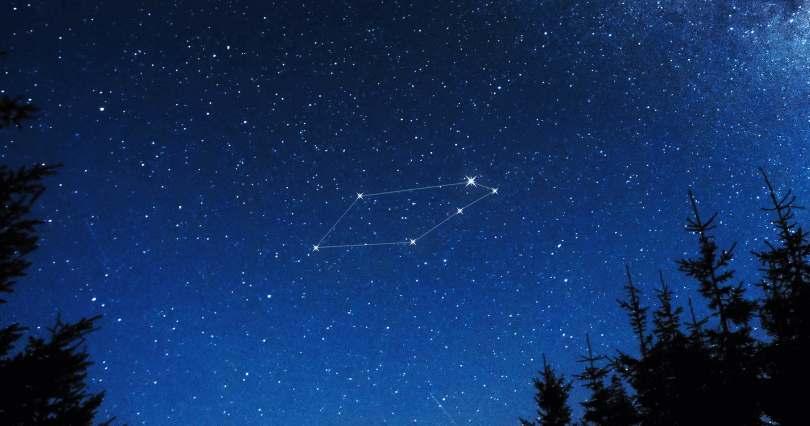 Pin
Pin Image by starregistration.net
While most constellations are steeped in ancient mythologies, a newer generation of star patterns emerged during the Age of Enlightenment. As science and exploration advanced, so did our understanding of the cosmos. Reflecting this shift, some constellations were named after scientific instruments and objects, transforming the night sky into a celestial laboratory.
A Scientific Revolution in the Stars
The 18th century saw a surge in scientific inquiry, and the heavens became a canvas for astronomers to express their passion for discovery. Constellations like Telescopium (Telescope) and Microscopium (Microscope) are prime examples of this trend. These celestial additions paid homage to the tools that were revolutionizing scientific understanding.
- Telescopium: This constellation represents the telescope, an instrument that opened up the universe to unprecedented exploration. Its placement among the stars symbolizes the power of human ingenuity to uncover the cosmos’ secrets.
- Microscopium: Named after the microscope, this constellation honors a tool that revealed the intricate details of the microscopic world. It stands as a testament to the scientific pursuit of knowledge on both the grand and the minuscule scales.
A Legacy of Enlightenment
While these modern constellations might not carry the same mythical allure as their ancient counterparts, they hold a unique significance. They represent a time when human curiosity and scientific endeavor were reaching new heights. By naming constellations after scientific instruments, astronomers of the era connected the earthly pursuit of knowledge with the vast expanse of the universe.
These constellations serve as a reminder that our understanding of the cosmos is constantly evolving. Just as new scientific instruments continue to push the boundaries of human knowledge, the constellations serve as a celestial record of our intellectual journey.
Conclusion
Constellations have been a source of wonder and inspiration for countless generations. Whether you’re an astronomy enthusiast or simply enjoy stargazing, understanding the different types of constellations can enhance your celestial experience. So, the next time you look up at the night sky, try to identify the patterns and appreciate the rich history and mythology behind them.
FAQs About Types of Constellations
Constellations are groups of stars that form recognizable patterns in the night sky. They have been used for centuries for navigation, storytelling, and cultural significance.
There are primarily two main types of constellations:
- Mythological constellations: These are constellations named after figures from Greek, Roman, or other mythologies. Examples include Orion, Pegasus, and Cassiopeia.
- Modern constellations: These are constellations named after scientific instruments or objects, reflecting the scientific advancements of recent centuries. Examples include Telescopium (Telescope) and Microscopium (Microscope).
While mythological and modern constellations are the most common, other classifications exist:
- Zodiac constellations: These are the 12 constellations that the Sun passes through during the year.
- Asterisms: These are smaller, recognizable patterns within constellations. Examples include the Big Dipper (part of Ursa Major) and the Orion’s Belt (part of Orion).
Historically, constellations were named based on their perceived resemblance to objects, animals, or mythological figures. Modern constellations often reflect the scientific advancements of their time.
No, different cultures have identified different constellations. While some patterns are recognized universally, many constellations are specific to particular regions or civilizations.
While no longer used for navigation as extensively as in the past, constellations still hold cultural and educational significance. They are used for amateur astronomy, storytelling, and as a tool for teaching astronomy and mythology.
Technically, new constellations can be created, but the International Astronomical Union (IAU) is the official authority for recognizing constellations.














